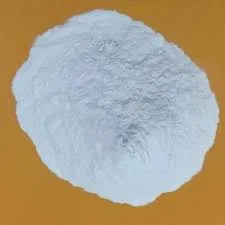
Oct . 21, 2024 20:57 Back to list
what is hydroxyethyl cellulose used for
Understanding Hydroxyethyl Cellulose Applications and Uses
Hydroxyethyl cellulose (HEC) is a nonionic, water-soluble polymer derived from cellulose, the primary structural component of plant cell walls. It is produced through the reaction of cellulose with ethylene oxide, resulting in a compound that retains the essential properties of cellulose while acquiring additional functional characteristics. Thanks to these properties, HEC has found widespread use across various industries, ranging from food production to pharmaceuticals and cosmetics.
1. Applications in the Food Industry
In the food industry, hydroxyethyl cellulose serves several functions. It is commonly used as a thickening agent, stabilizer, and emulsifier. Its ability to enhance the viscosity of food products makes it particularly valuable in sauces, dressings, and dairy products, where a desirable creamy texture is essential. Additionally, HEC can improve the mouthfeel of low-fat formulations, enabling food manufacturers to create healthier options without sacrificing quality. As a food-grade additive, HEC is recognized for its safety and effectiveness, bringing benefits to both producers and consumers.
2. Role in Pharmaceuticals
Hydroxyethyl cellulose plays a critical role in the pharmaceutical sector, particularly in drug formulation. Its unique properties allow it to be used as a binder, thickener, and stabilizer in various dosage forms, including tablets, gels, and ointments. HEC can control the release rate of active pharmaceutical ingredients, thus enhancing the efficacy and bioavailability of medication. Moreover, due to its non-toxic and biocompatible nature, HEC is frequently employed in ophthalmic formulations and topical applications.
3. Contributions to Cosmetics and Personal Care Products
what is hydroxyethyl cellulose used for

In the cosmetics and personal care industry, HEC is valued for its thickening and film-forming properties. It is used in products such as creams, lotions, shampoos, and conditioners to improve texture and application. Hydroxyethyl cellulose helps to stabilize formulations and provides a smooth, pleasant feel on the skin or hair. Additionally, it plays a role in enhancing the moisturizing properties of many cosmetic products, making it a popular ingredient in skincare lines aimed at hydration.
4. Industrial and Household Applications
Beyond food, pharmaceuticals, and cosmetics, hydroxyethyl cellulose finds its way into several industrial and household products. It is commonly utilized in paints and coatings for its thickening and stabilizing capabilities, improving the application and reducing the likelihood of running. In construction, HEC is added to cement and plaster for additional workability and adhesion. Its water retention properties also make it useful in tile adhesives and sealants.
5. Environmental Impact and Safety
One significant advantage of hydroxyethyl cellulose is its environmentally friendly profile. As a plant-derived polymer, it is biodegradable and poses minimal risk to the environment. Furthermore, HEC does not contain harmful solvents or chemicals, making it a safer choice for various applications.
In conclusion, hydroxyethyl cellulose is a versatile and valuable polymer used across multiple industries. Its thickening, stabilizing, and emulsifying properties make it an essential ingredient in food, pharmaceuticals, cosmetics, and various industrial applications. As research continues to uncover new uses for this remarkable compound, its importance in enhancing product quality and performance remains clear.
-
Versatile Hpmc Uses in Different Industries
NewsJun.19,2025
-
Redispersible Powder's Role in Enhancing Durability of Construction Products
NewsJun.19,2025
-
Hydroxyethyl Cellulose Applications Driving Green Industrial Processes
NewsJun.19,2025
-
Exploring Different Redispersible Polymer Powder
NewsJun.19,2025
-
Choosing the Right Mortar Bonding Agent
NewsJun.19,2025
-
Applications and Significance of China Hpmc in Modern Industries
NewsJun.19,2025







